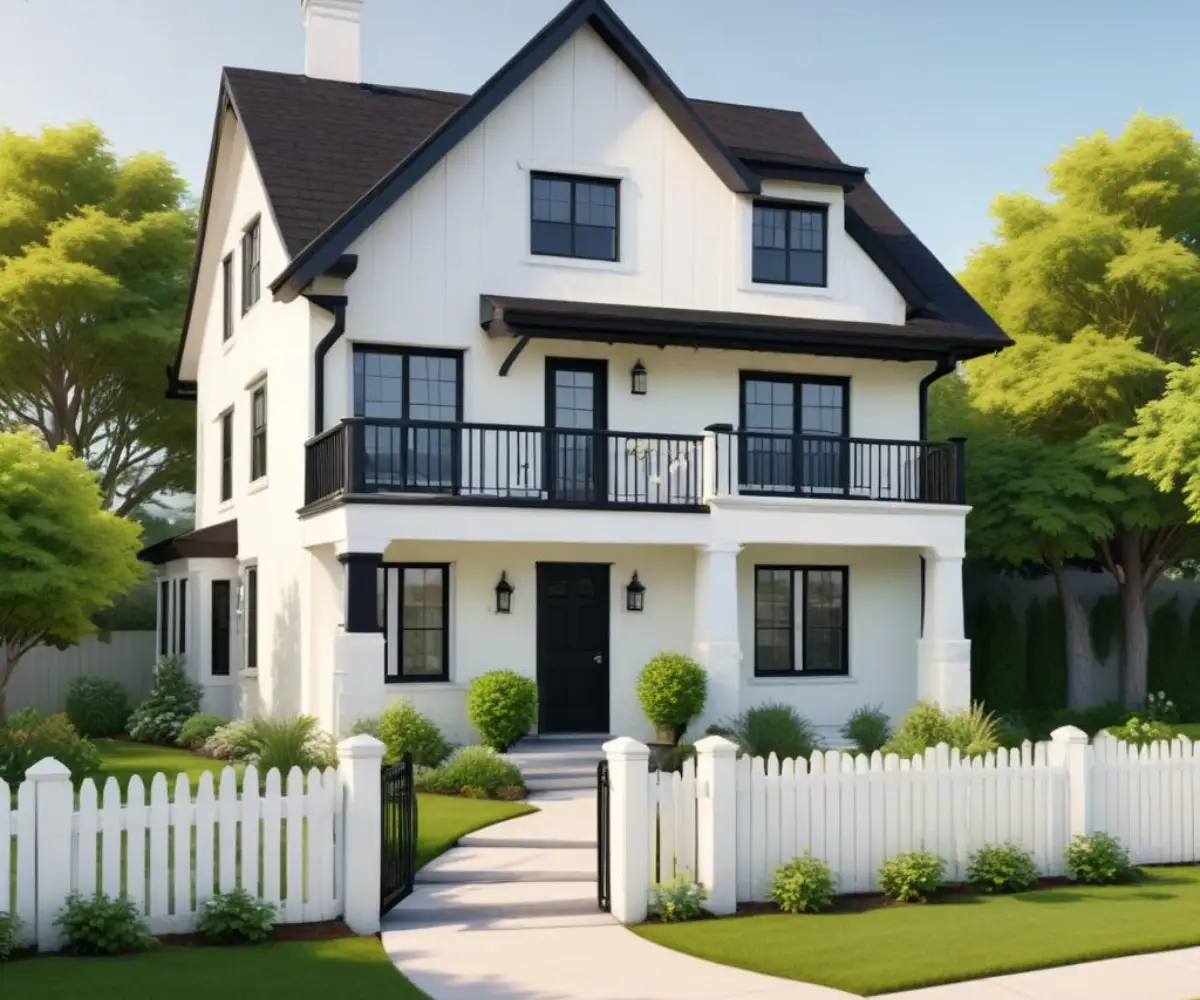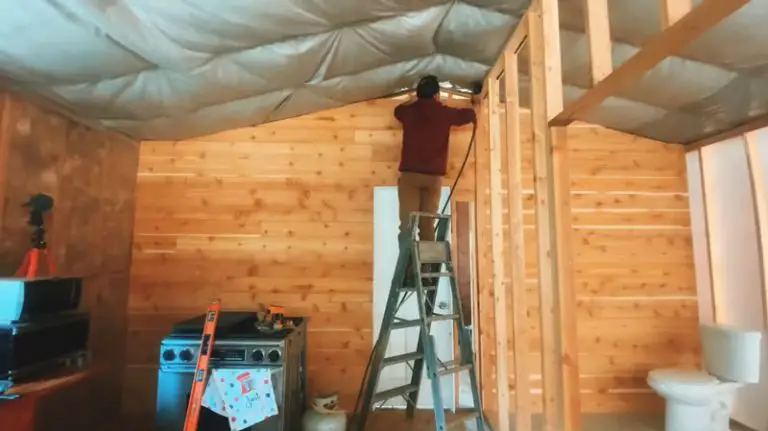White Paint Regret? Avoid These 7 Mistakes for a Perfect Finish
Choosing to paint your house white can feel like a classic, can’t-go-wrong decision. It promises a clean, timeless, and bright aesthetic that can boost curb appeal and make interiors feel more spacious. Yet, a surprising number of homeowners find themselves battling regret just months after the final coat has dried.
The pristine vision they had in mind is replaced by a reality that feels disappointingly… off. This regret often stems from a few critical, yet commonly overlooked, mistakes. Understanding these potential pitfalls is the key to ensuring your white house is a dream come true, not a costly error.
You'll Learn About
The Magnetic Pull of White Paint: Why Is It So Popular?
The appeal of white is undeniable, and its popularity is rooted in powerful psychological and practical benefits. White is the ultimate neutral, creating a blank canvas that allows architectural details and landscaping to take center stage. For potential buyers, a white house offers a seamless transition, allowing them to envision their own style without being deterred by a more personal color choice.
Architecturally, white is incredibly versatile. It looks equally stunning on a modern minimalist structure, a charming farmhouse, or a traditional colonial home. This flexibility has cemented its status as a go-to choice for designers and homeowners alike who seek a look that is both fresh and enduring.
The #1 Fear: Will a White House Look Dirty and Dated?
The primary anxiety for anyone considering white paint is maintenance. White shows everything. Dirt splash-back from rain, streaks from pollen, and grime from environmental pollutants can quickly turn a brilliant white into a dingy gray, especially on exteriors. This is a valid concern, but it’s not an insurmountable one.
Beyond cleanliness, there’s the fear that an all-white palette will feel sterile, cold, or even dated. This often happens when the wrong shade of white is used, creating a stark, clinical environment rather than a warm, inviting home. Both of these major fears can be completely avoided with careful planning and the right choices from the start.
Beyond Dirt: The Unspoken Challenges of White Paint
True success with white paint goes deeper than just keeping it clean. Several less-obvious factors can make or break the final result, leading to that nagging feeling of regret if ignored.
The Undertone Trap is the most common mistake. Not all white paints are pure white; they contain subtle undertones of yellow, blue, pink, or gray. In the controlled lighting of a paint store, these undertones can be nearly invisible. However, once on your walls, natural light will expose them dramatically. A white with a slight yellow undertone can look beautifully creamy and warm in a south-facing room but may appear dingy and sallow in the cooler light of a north-facing room. Similarly, a cool white with blue undertones can look crisp and modern in one space but feel sterile and icy in another. Ignoring undertones is how you end up with a house color that clashes with your roof, stone accents, or even your landscaping.
Another critical error is choosing the wrong paint sheen. The sheen, or finish, of the paint determines how much light it reflects. A high-gloss sheen might seem like a good idea for durability, but on large surfaces like siding or interior walls, it will highlight every single imperfection, bump, and nail pop. Conversely, a completely flat finish, while excellent at hiding flaws, can be difficult to clean, making it a risky choice for high-traffic areas or exteriors prone to dirt. The key is to match the sheen to the surface and its function.
| Paint Sheen | Best Use Cases | Pros | Cons |
|---|---|---|---|
| Flat / Matte | Ceilings, low-traffic interior walls, exterior siding | Hides imperfections, non-reflective, sophisticated look | Difficult to clean, can scuff easily |
| Eggshell | Living rooms, bedrooms, hallways | Low sheen, more durable than flat, easier to clean | May show some minor imperfections |
| Satin | High-traffic areas, kitchens, bathrooms, exterior trim | Soft glow, durable, moisture-resistant, easy to clean | Can highlight surface flaws more than flat or eggshell |
| Semi-Gloss | Trim, doors, cabinets, windows | Highly durable, sleek finish, excellent for cleaning | Shows every imperfection, can be too shiny for walls |
Choosing the *Right* White: Your Shield Against Regret
The single most important decision you will make is selecting the specific shade of white. With thousands of options available, this choice requires more than just picking a name you like off a paint chip. It requires testing and a basic understanding of color theory.
Cool Whites vs. Warm Whites: The Critical Difference
Every white paint leans either warm or cool, and this will dictate the entire mood of your home. Cool whites have blue, gray, or green undertones. They create a crisp, clean, and modern feel and are excellent for neutralizing overly sunny, south-facing rooms. Popular cool whites include Benjamin Moore’s Chantilly Lace and Sherwin-Williams’ Extra White.
Warm whites have yellow, red, or beige undertones. They create a cozy, soft, and inviting atmosphere. These shades are perfect for adding warmth to north-facing rooms that receive less direct light. Well-loved warm whites include Sherwin-Williams’ Alabaster and Benjamin Moore’s White Dove. It is absolutely essential to test large swatches of your top choices on different walls of your house and observe them at all times of day—morning, noon, and evening—to see how the light changes their appearance.

The Secret Weapon: Understanding LRV (Light Reflectance Value)
One of the most powerful but least-discussed tools in paint selection is the Light Reflectance Value, or LRV. Found on the back of most paint chips, LRV is a scale from 0 (absolute black) to 100 (pure white) that measures how much light a color reflects.
This is crucial for white paint. A stark, pure white with a high LRV (90+) can be literally blinding on a home’s exterior in direct, intense sunlight, creating a harsh glare. For interiors, a high LRV in a room with abundant natural light can wash out details and feel sterile. Often, a slightly softer off-white with an LRV in the 75-85 range provides the desired brightness without the overwhelming glare, making it a much safer and more pleasant choice.
The Long-Term Commitment: A Maintenance Plan for Your White House
A white house doesn’t have to be a dirty house. Regret can be held at bay with a proactive maintenance strategy. High-quality paint is your first line of defense. Invest in a premium, durable paint with additives that resist mildew and dirt accumulation. While it may cost more upfront, it will save you significant time and money on cleaning and repainting in the long run.
Schedule an annual or bi-annual gentle washing. For most siding, a low-pressure power washer or even a garden hose with a soft bristle brush and a mild cleaning solution is sufficient to remove the year’s grime. Also, consider your landscaping. Keep shrubs and trees trimmed at least a foot away from the house to prevent green stains from mildew and algae and to allow for proper air circulation.
What About the Interior? Avoiding the “Sterile Box” Look
The fear of a cold, sterile environment is a major reason for regret when painting interiors white. An all-white room can feel lifeless and unwelcoming if not properly executed. The solution is not to abandon white, but to layer textures and materials to create depth and warmth.
Introduce elements like chunky knit blankets, natural wood furniture, jute or wool rugs, metallic finishes on lamps and fixtures, and plenty of green plants. These varied textures break up the visual monotony of the white and make the space feel rich and inviting. Also, make sure all details are cohesive; knowing what blank wall plates are used for can help you create a seamless look by covering unused outlets rather than leaving a visual disruption on your pristine wall.
The Unexpected Problems You Can’t Ignore
Sometimes, a new coat of white paint can reveal problems you never knew you had. Its clean, uniform surface can suddenly make other aging elements of your home—like an old roof, cracked walkways, or a deteriorating foundation—look much more prominent. Before you paint, do a thorough inspection of your home’s exterior and address these issues first.
Furthermore, the process of painting can unearth other hidden issues. If you notice an unusual odor after moving furniture and clearing out rooms, don’t automatically blame the paint fumes. It’s possible you’ve disturbed a hidden problem, and it could be a dead animal or sewer smell that now has a clear path to circulate. Similarly, some volatile organic compounds (VOCs) in paint can be confused with other things. A persistent Sharpie smell in the house after painting, for instance, could point to a different issue entirely that needs investigation.
The Final Verdict: Is Painting Your House White a Mistake?
Painting your house white is not a mistake. The mistake is a lack of preparation. Regret doesn’t come from the color itself, but from choosing the wrong shade for your light, the wrong sheen for your walls, or having no plan for maintenance.
By understanding undertones, testing large swatches, strategically selecting your paint sheen, and committing to a simple cleaning schedule, you can eliminate nearly every potential downside. A well-planned white house is a timeless, beautiful, and valuable asset that you will certainly not regret.

